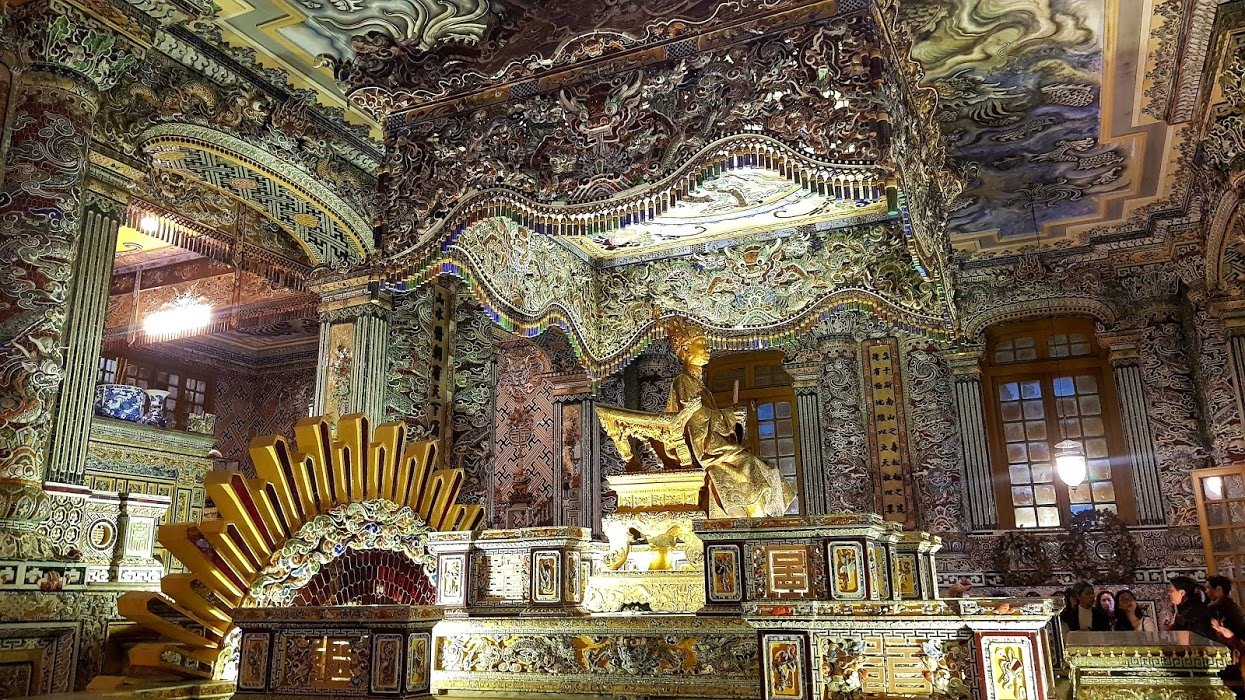
Welcome to the royal tombs of Hue, a collection of majestic mausoleums nestled along the picturesque Perfume River in central Vietnam. These impressive architectural masterpieces stand as a testament to the rich history and cultural legacy of the Nguyen Dynasty, the last ruling dynasty of Vietnam. Join us on a travel guide-style exploration of the Royal Tombs, as we delve into their historical significance, architectural splendor, and the captivating stories that lie within.
The Royal Tombs of Hue were commissioned by the Nguyen emperors, who ruled Vietnam from 1802 to 1945. Seeking to create elaborate resting places for their final journey, each emperor constructed his own mausoleum during his reign. These tombs not only served as final resting places but also as symbols of imperial power, reflecting the grandeur and opulence of the Nguyen Dynasty.
Begin your journey with the Tomb of Emperor Minh Mang, located about 12 kilometres southwest of Hue’s city centre. Designed by the emperor himself, this tomb is a harmonious blend of traditional Vietnamese and Chinese architectural styles. Stroll through the beautiful landscaped gardens, admire the intricate carvings, and learn about the life and achievements of Emperor Minh Mang, known for his commitment to Confucian principles.
Continue your exploration at the Tomb of Emperor Tu Duc, considered one of the most poetic and picturesque mausoleums in Hue. Situated in a serene valley, this tomb showcases the emperor’s love for art, literature, and nature. Wander through the tranquil gardens, visit the pavilions and temples, and marvel at the detailed craftsmanship of the structures. Don’t miss the opportunity to visit the Stele Pavilion, which houses the emperor’s poetic compositions.
Next, venture to the Tomb of Emperor Khai Dinh, a striking fusion of traditional Vietnamese and European architectural styles. Perched on the slopes of Chau Chu Mountain, this tomb is known for its ornate decorations and intricate mosaic work. Explore the grandeur of the main hall, adorned with colorful glass and ceramic fragments, and ascend to the burial chamber to pay homage to Emperor Khai Dinh.
Visit the Tomb of Emperor Gia Long, the first emperor of the Nguyen Dynasty and the founder of the dynasty’s imperial capital in Hue. This tomb is characterized by its simplicity and understated elegance, reflecting the emperor’s humble origins. Take a leisurely stroll through the peaceful gardens, which offer panoramic views of the surrounding countryside, and learn about the life and achievements of Emperor Gia Long.
Conclude your journey with a visit to the Tomb of Emperor Dong Khanh, the last emperor to be buried in Hue. This tomb features a blend of traditional Vietnamese and French architectural elements. Explore the intricately designed buildings, admire the sculptures and reliefs, and gain insights into the life and reign of Emperor Dong Khanh, who played a significant role in Vietnam’s history during the late 19th century.
The Royal Tombs of Hue stand as magnificent testaments to the grandeur and elegance of Vietnam’s imperial past. Discover the rich history, architectural splendor, and cultural significance of these mausoleums as you traverse through the tranquil gardens and explore the intricate details of each tomb. Let the Royal Tombs of Hue transport you back in time, allowing you to immerse yourself in the legacy of the Nguyen Dynasty and appreciate the enduring beauty of Vietnam’s royal heritage.
Subscribe to see secret deals prices drop the moment you sign up!
